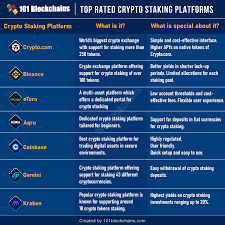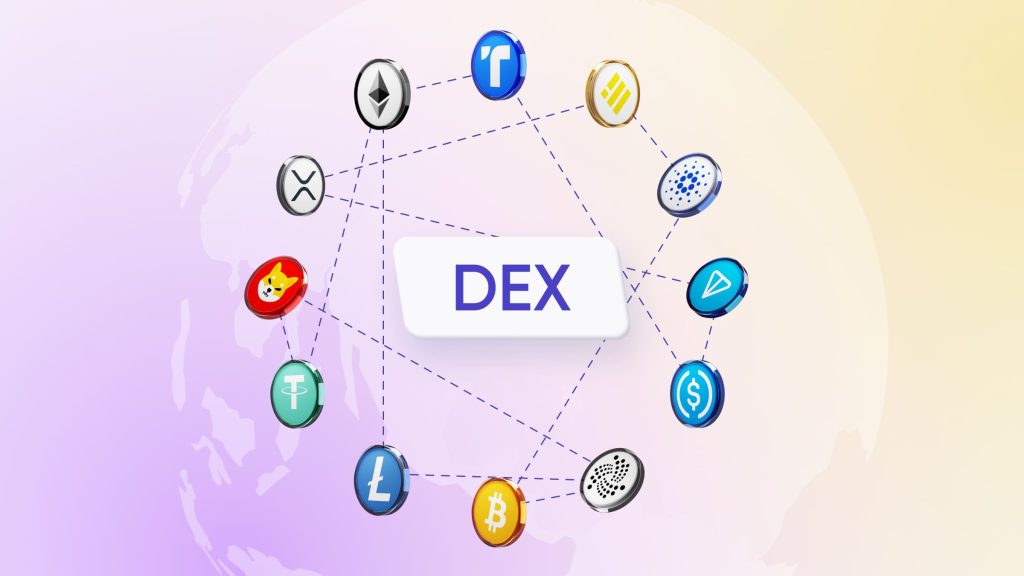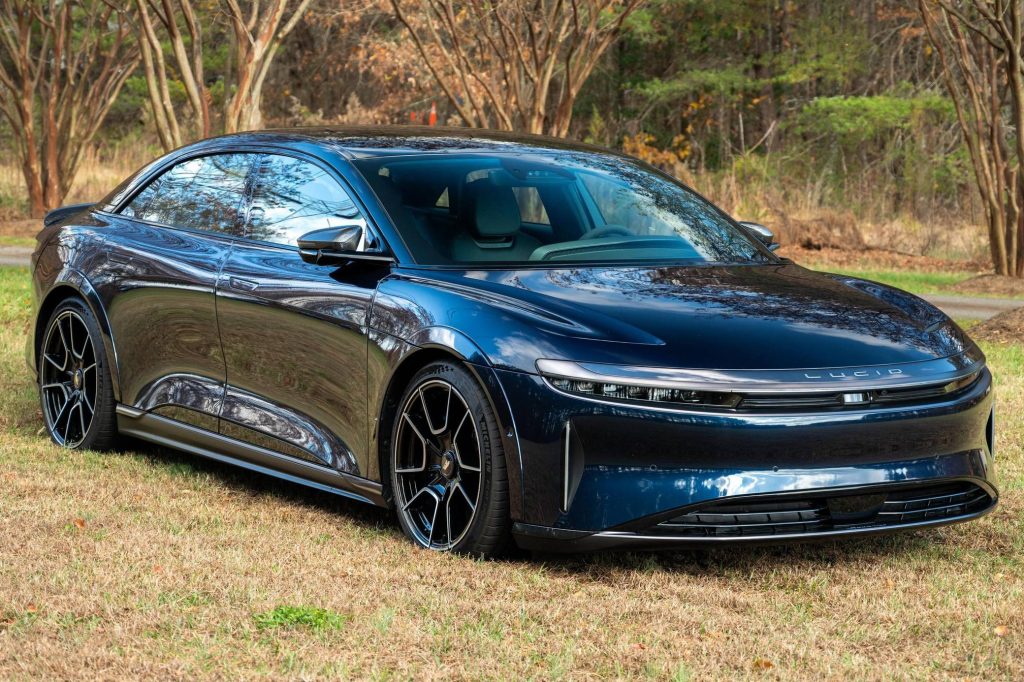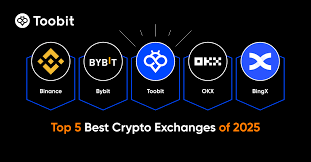-
How to Store Cryptocurrency Securely: A Complete Guide (2025)
Filed under Blog, Crypto Currency & blockchainAug 17Learn how to store cryptocurrency securely using wallets, best practices, and safety tips to protect your digital assets from hacks and theft.As cryptocurrency adoption grows, so does the number of hacks, scams, and thefts targeting investors. In 2024 alone, over $1.7 billion worth of crypto was stolen from wallets and exchanges. This highlights one critical point: owning crypto is one thing, but storing it securely is another challenge altogether.
Whether you’re a beginner or a seasoned investor, protecting your digital assets is essential. In this guide, we’ll explore the safest ways to store cryptocurrency, the types of wallets available, and practical tips to keep your funds safe.

1. Why Secure Storage Matters in Crypto
Unlike traditional banks, cryptocurrency has no central authority or customer service to recover lost funds. If your private keys are stolen, there’s no way to get your coins back.
Risks of poor storage include:
- Hacks: Cybercriminals target exchanges and hot wallets.
- Phishing attacks: Fake websites and emails tricking users into sharing credentials.
- Lost access: Forgotten passwords or misplaced seed phrases.
- Scams: Fake wallets or investment platforms stealing funds.
🔐 Bottom line: You are your own bank in crypto — and that means you’re also responsible for your own security.
2. Types of Cryptocurrency Wallets
Storing crypto starts with choosing the right wallet. There are two main categories: hot wallets and cold wallets.
Hot Wallets (Online Storage)
Hot wallets are connected to the internet, making them convenient but more vulnerable.
- Examples: Coinbase Wallet, Trust Wallet, MetaMask.
- Pros: Easy to set up, quick access, ideal for beginners.
- Cons: Higher risk of hacks and phishing attacks.
Best for: Small amounts or daily trading.
Cold Wallets (Offline Storage)
Cold wallets are offline devices or methods of storage, making them much harder to hack.
- Examples: Ledger Nano X, Trezor, paper wallets.
- Pros: Maximum security, immune to online hacks.
- Cons: Less convenient for frequent trading.
Best for: Long-term storage of large amounts.

Custodial vs. Non-Custodial Wallets
- Custodial wallets (exchange wallets like Binance or Coinbase) are managed by a third party. You don’t control the private keys.
- Non-custodial wallets (hardware or software wallets) give you full control of your funds.
💡 Pro Tip: The golden rule is: “Not your keys, not your coins.”
3. Best Wallets for Secure Crypto Storage (2025)
Hardware Wallets (Best for Security)
- Ledger Nano X – Bluetooth-enabled, supports 5,500+ coins.
- Trezor Model T – Touchscreen device with top-tier security.
Software Wallets (Best for Beginners)
- Exodus – User-friendly interface, desktop & mobile.
- Trust Wallet – Backed by Binance, supports multiple coins.
Mobile Wallets (On-the-Go Access)
- Coinbase Wallet – Easy integration with Coinbase exchange.
- MetaMask – Popular for Ethereum and DeFi tokens.
4. How to Store Cryptocurrency Securely
Step 1: Choose the Right Wallet
- Beginners → Start with a trusted mobile wallet.
- Long-term investors → Use a hardware wallet.
Step 2: Secure Your Private Keys
- Never share your private keys.
- Store your seed phrase offline in multiple locations.
Step 3: Enable Two-Factor Authentication (2FA)
- Use apps like Google Authenticator or Authy (not SMS-based 2FA).
Step 4: Keep Software Updated
- Always update your wallet firmware and apps to patch vulnerabilities.
Step 5: Avoid Public Wi-Fi
- Hackers can intercept connections on public networks.
Step 6: Diversify Storage
- Don’t keep all your crypto in one wallet or exchange.

5. Common Mistakes to Avoid
- Leaving funds on exchanges: Exchanges are prime targets for hackers.
- Taking screenshots of seed phrases: Photos can be hacked or leaked.
- Using weak passwords: Always create unique, complex passwords.
- Ignoring backups: Without your backup phrase, your funds may be lost forever.
6. Advanced Security Tips
- Use a multisignature wallet: Requires multiple approvals to send funds.
- Split storage: Keep some funds in a hot wallet (for trading) and the rest in a cold wallet.
- Consider metal backups: Store your seed phrase engraved on steel plates (fireproof & waterproof).
- Use a VPN: Encrypts your internet traffic when accessing wallets or exchanges.
7. What Happens If You Lose Access?
- If you lose your password, most wallets can be recovered with the seed phrase.
- If you lose your seed phrase, recovery is impossible.
- Some investors use multi-backup strategies (secure offline copies in different locations).
8. Regulatory & Insurance Considerations
- Some exchanges (like Gemini) offer insurance coverage for funds stored on their platform.
- Always check local regulations about crypto storage and reporting.
🔗 External Resource: Crypto Security Guide – Bitcoin.org
Conclusion
Storing cryptocurrency securely is just as important as buying it wisely. With the right wallet, strong security practices, and awareness of risks, you can protect your funds from theft and loss.
Key Takeaways:
- Use hardware wallets for maximum safety.
- Always secure private keys and seed phrases offline.
- Avoid leaving large amounts on exchanges.
- Stay alert against phishing and scams.
Start by setting up a trusted crypto wallet today, and take control of your digital assets with confidence.
-
Luxury SUV Reviews 2025
Filed under Luxury Cars & Auto ReviewsAug 17The luxury SUV market in 2025 is more competitive than ever, with automakers introducing cutting-edge technology, refined interiors, and powerful performance upgrades. Whether you’re looking for unmatched comfort, advanced safety, or thrilling driving dynamics, the latest luxury SUVs offer something for every discerning driver. This comprehensive review explores the top luxury SUVs of 2025, helping you make an informed decision before your next purchase.

The Evolution of Luxury SUVs
Luxury SUVs have transformed from rugged utility vehicles into high-tech, stylish, and performance-driven machines. Today’s models combine:
- Advanced driver-assistance technologies
- Hybrid and electric powertrains for sustainability
- Premium interior craftsmanship
- State-of-the-art infotainment systems
The shift reflects consumer demand for vehicles that deliver both prestige and practicality.
Top Luxury SUV Reviews for 2025
1. 2025 Mercedes-Benz GLE
The Mercedes-Benz GLE 2025 continues its reputation as one of the most versatile and stylish midsize luxury SUVs.
- Engine Options: Turbocharged inline-6 and plug-in hybrid
- Interior Highlights: MBUX infotainment system with AI-driven features
- Safety: Active Lane Change Assist, adaptive cruise control, and 360-degree camera
- Price Range: Starting around $65,000
This SUV combines elegance with everyday usability, making it one of the best luxury SUVs for families in 2025.

2. 2025 BMW X7
As BMW’s flagship SUV, the X7 2025 is all about size, comfort, and performance.
- Engine Options: Twin-turbo V8 and mild-hybrid technology
- Interior: Three rows of premium leather seating, panoramic sky lounge roof
- Technology: BMW iDrive 9 with personalized digital cockpit
- Price Range: From $80,000
The X7 is ideal for those who want a luxury SUV with commanding road presence without compromising refinement.
3. 2025 Audi Q8 e-tron
The Audi Q8 e-tron sets the standard for luxury electric SUVs in 2025.
- Powertrain: Dual-motor electric with up to 370 miles of range
- Interior: Minimalist luxury with sustainable materials
- Features: Fast charging, advanced driver-assist systems
- Price Range: Approx. $75,000
With its eco-friendly design and cutting-edge technology, the Q8 e-tron is a top pick for drivers seeking a premium EV SUV.
4. 2025 Range Rover Sport
Few SUVs match the prestige of the Range Rover Sport.
- Engines: Mild-hybrid and plug-in hybrid options
- Interior: Modern luxury with customizable seating and finishes
- Performance: Terrain Response 2 system for off-road dominance
- Price Range: Around $85,000
Perfect for adventure enthusiasts, this SUV delivers luxury and off-road capability in one package.
5. 2025 Lexus LX 600
The Lexus LX 600 blends durability with sophistication, staying true to its luxury heritage.
- Engine: Twin-turbo V6 for powerful yet efficient performance
- Interior: Japanese-inspired design, high-quality materials
- Technology: Lexus Safety System+ 3.0 with advanced safety aids
- Price Range: Starting at $92,000
Known for long-term reliability, the LX 600 is a smart choice for luxury SUV buyers who value dependability.
6. 2025 Porsche Cayenne
The Porsche Cayenne remains one of the sportiest luxury SUVs available.
- Engines: Turbocharged V6, V8, and plug-in hybrid variants
- Interior: Sports-car-inspired cockpit with luxury appointments
- Performance: 0–60 mph in under 4 seconds (Turbo GT trim)
- Price Range: From $77,000
If performance is your top priority, the Cayenne is the ultimate driver’s luxury SUV.
Key Features Buyers Should Consider in 2025
When shopping for a luxury SUV in 2025, pay close attention to:
- Powertrain Options – Electric, hybrid, or traditional combustion
- Safety Technology – AI-driven driver-assist systems
- Infotainment Systems – Large touchscreens, wireless connectivity, voice commands
- Comfort & Space – Premium seating, legroom, cargo capacity
- Resale Value & Reliability – Long-term investment consideration
Comparison Table: Top Luxury SUVs 2025
Model Starting Price Powertrain Range/MPG Standout Feature Mercedes GLE 2025 $65,000 Hybrid/ICE 24 MPG / 50 mi EV AI-powered MBUX system BMW X7 2025 $80,000 Mild-Hybrid V8 21 MPG Panoramic sky lounge roof Audi Q8 e-tron 2025 $75,000 Fully Electric 370 miles Sustainable luxury interior Range Rover Sport $85,000 Hybrid/Plug-in 23 MPG / 48 mi EV Terrain Response 2 system Lexus LX 600 2025 $92,000 Twin-Turbo V6 20 MPG Legendary reliability Porsche Cayenne 2025 $77,000 V6/V8/Hybrid 22 MPG / 40 mi EV Sports-car performance
Expert Opinions on Luxury SUVs in 2025
Automotive experts highlight a few trends dominating the luxury SUV segment this year:
- Electrification is becoming mainstream, with brands like Audi and Mercedes leading the charge.
- Personalization is key, with bespoke interior finishes and tailored driving modes.
- AI integration enhances safety and comfort by predicting driver needs.
According to a recent J.D. Power study, luxury SUV buyers prioritize technology, safety, and eco-friendliness over traditional horsepower numbers.
Internal Links
External Links
Conclusion
The luxury SUV market in 2025 is more exciting than ever, offering an incredible mix of performance, style, and technology. From the electrified Audi Q8 e-tron to the performance-driven Porsche Cayenne, and the reliable Lexus LX 600, there’s a luxury SUV to suit every lifestyle.
When choosing your next SUV, focus on the features that matter most—be it performance, eco-friendliness, or long-term reliability. With so many outstanding options available, 2025 is truly the year of the luxury SUV revolution.
-
Top Sports Cars Under 100k
Filed under Luxury Cars & Auto ReviewsAug 17For car enthusiasts, the dream of owning a powerful, stylish, and performance-driven sports car doesn’t always have to come with a six-figure price tag. In today’s competitive auto market, many manufacturers offer thrilling sports cars under $100,000 that combine speed, luxury, and technology. From sleek coupes to high-performance roadsters, these cars deliver a heart-racing experience while keeping budgets (relatively) in check.
If you’re looking to strike the perfect balance between affordability and performance, this guide will walk you through the top sports cars under 100k that are dominating 2025’s market.

Why Choose a Sports Car Under $100k?
Before diving into the list, it’s worth asking: Why cap the budget at $100,000?
- Performance Value: Many sports cars in this price range rival supercars that cost twice as much.
- Practical Luxury: These vehicles offer cutting-edge tech, comfort, and safety features alongside raw speed.
- Depreciation Buffer: Cars under $100k tend to depreciate slower than ultra-high-end models.
- Accessibility: Financing and leasing options make these cars more attainable for enthusiasts.
Top Sports Cars Under 100k in 2025
1. Chevrolet Corvette Stingray (C8)
- Starting Price: ~$68,300
- Horsepower: 495 hp
- 0-60 mph: 2.9 seconds
The C8 Corvette Stingray continues to dominate the “affordable supercar” segment. With its mid-engine design, it offers exotic car handling at a fraction of the cost. Its aggressive styling and cutting-edge infotainment system make it one of the best sports cars under 100k.
Alt Text for Image: Chevrolet Corvette Stingray C8 sports car under 100k.
2. Porsche 718 Cayman S
- Starting Price: ~$80,700
- Horsepower: 350 hp
- 0-60 mph: 4.4 seconds
For those seeking precision handling and German engineering, the Porsche 718 Cayman S is a top choice. With a mid-engine layout, it delivers balance, agility, and track-ready performance while maintaining everyday usability.
Alt Text for Image: Porsche 718 Cayman S luxury sports car under 100k.

3. Ford Mustang Dark Horse
- Starting Price: ~$62,000
- Horsepower: 500 hp
- 0-60 mph: 3.7 seconds
The Ford Mustang Dark Horse is a new chapter in the Mustang legacy. With its 5.0L V8 engine, track-tuned suspension, and bold styling, it’s perfect for enthusiasts who want raw American muscle with modern refinement.
4. BMW M2 (2025 Model)
- Starting Price: ~$63,000
- Horsepower: 453 hp
- 0-60 mph: 3.9 seconds
The BMW M2 is compact yet ferocious. Known for its sharp cornering and rear-wheel-drive fun, the M2 delivers a pure driver’s experience. With luxury interiors and iDrive tech, it’s both a daily driver and a weekend track toy.
5. Nissan Z (Performance Trim)
- Starting Price: ~$56,500
- Horsepower: 400 hp
- 0-60 mph: 4.3 seconds
Bringing back classic styling with modern engineering, the Nissan Z is a nostalgic yet powerful entry in the under-100k segment. Its twin-turbo V6 and retro-inspired looks make it stand out among Japanese sports cars.
6. Toyota GR Supra (3.0 Premium)
- Starting Price: ~$58,000
- Horsepower: 382 hp
- 0-60 mph: 3.9 seconds
The Toyota GR Supra is a fan-favorite, blending Toyota reliability with BMW engineering. The Supra delivers blistering acceleration, dynamic handling, and a driver-focused cabin—making it one of the best affordable sports cars under 100k.

7. Audi TT RS
- Starting Price: ~$74,200
- Horsepower: 394 hp
- 0-60 mph: 3.6 seconds
The Audi TT RS brings a compact yet luxurious sports car experience with its 5-cylinder turbo engine and Quattro all-wheel-drive system. Perfect for buyers who want speed without sacrificing daily usability.
8. Jaguar F-Type P450 R-Dynamic
- Starting Price: ~$79,900
- Horsepower: 444 hp
- 0-60 mph: 4.4 seconds
The Jaguar F-Type remains one of the most stylish sports cars under 100k. With its iconic design, roaring V8, and luxurious interior, it’s a head-turner that balances refinement and raw power.
9. Tesla Model 3 Performance
- Starting Price: ~$54,990
- Horsepower: 510 hp (estimated)
- 0-60 mph: 2.9 seconds
For those who want electric thrills, the Tesla Model 3 Performance delivers instant torque, impressive handling, and cutting-edge technology. Plus, it’s eco-friendly and comes with access to Tesla’s Supercharger network.
Factors to Consider Before Buying
When choosing the best sports car under 100k, keep these key factors in mind:
- Performance Needs: Do you prefer track-ready speed or comfortable daily driving?
- Brand Preference: Some buyers lean toward American muscle, others toward German precision.
- Resale Value: Brands like Porsche and Corvette hold value better than most.
- Technology & Features: Consider infotainment, driver-assist systems, and safety ratings.
- Maintenance Costs: European sports cars can be pricier to maintain compared to American or Japanese models.

Internal & External Resources
- Internal Links:
- External Links:
Conclusion
Owning a sports car doesn’t have to mean breaking the bank. From the Corvette C8’s supercar looks to the Tesla Model 3 Performance’s electric acceleration, there are plenty of sports cars under 100k in 2025 that deliver on performance, style, and value.
Whether you’re chasing track times, enjoying weekend drives, or simply wanting to turn heads on the road, these models prove you don’t need a million-dollar budget to experience a thrilling ride.
Final Thought: If you’re ready to make the leap, start by test-driving your top picks—you’ll know the right sports car when you feel it.
-
Crypto Staking for Passive Income: Beginner’s Guide 2025
Filed under Blog, Crypto Currency & blockchainAug 17Learn how crypto staking works and how to earn passive income. Discover the best staking coins, platforms, risks, and strategies for beginners.
- Investors are increasingly looking for ways to earn passive income in crypto.
- Staking allows holders of certain cryptocurrencies to lock their coins and earn rewards.
- In this guide, we’ll explain how crypto staking works, the best platforms, and the risks to consider.
1. What is Crypto Staking?
- Definition: Staking is the process of locking your crypto in a blockchain network that uses Proof-of-Stake (PoS) to validate transactions.
- In return, you earn staking rewards (like interest).
How it works:
- Buy a PoS coin (e.g., Ethereum, Cardano).
- Lock it in a wallet or staking platform.
- Earn regular rewards based on the amount staked.

2. Benefits of Staking for Passive Income
- Earn Rewards: Generate income by simply holding crypto.
- Support the Network: Stakers help secure the blockchain.
- Low Effort: Unlike trading, staking doesn’t require constant monitoring.
- Compounding: Rewards can be reinvested for greater returns.
3. Best Cryptocurrencies for Staking (2025)
Ethereum (ETH)
- The largest PoS crypto after Ethereum 2.0 upgrade.
- Annual returns: ~4–6%.
Cardano (ADA)
- Popular for energy-efficient staking.
- Annual returns: ~3–5%.
Polkadot (DOT)
- Flexible staking and parachain ecosystem.
- Annual returns: ~10–12%.
Solana (SOL)
- Fast-growing ecosystem.
- Annual returns: ~6–8%.
Tezos (XTZ)
- One of the earliest staking coins.
- Annual returns: ~5–7%.
4. Best Staking Platforms for Beginners
Centralized Exchanges (Easy to Use)
- Binance – Wide range of staking coins, flexible terms.
- Coinbase – Beginner-friendly but lower rewards.
- Kraken – Secure and transparent fees.
DeFi Platforms (Higher Rewards, Higher Risk)
- Lido Finance – Liquid ETH staking.
- Rocket Pool – Decentralized Ethereum staking.

5. Risks of Crypto Staking
- Price Volatility: Rewards may not offset losses if the coin drops in value.
- Lock-Up Periods: Some staking requires funds to be locked (can’t sell).
- Slashing Risk: Validators may be penalized for misbehavior.
- Platform Risk: Using centralized exchanges means trusting a third party.
6. How to Start Staking Crypto Safely
- Choose a Staking Coin – Pick ETH, ADA, or another PoS crypto.
- Select a Platform – Decide between centralized exchanges or DeFi protocols.
- Transfer Funds to Wallet/Exchange – Keep funds safe before staking.
- Start Staking – Lock coins and begin earning rewards.
- Monitor Performance – Reinvest rewards or withdraw as needed.
7. Is Staking Better Than Mining?
- Mining: Requires expensive hardware and electricity.
- Staking: Simple, eco-friendly, and accessible to beginners.
- Conclusion: For passive income, staking is usually more practical.
8. Tax Implications of Staking
- In many countries, staking rewards are considered taxable income.
- Later, when selling, capital gains tax may also apply.
🔗 External Resource: IRS Cryptocurrency Guidelines
Conclusion
- Crypto staking is one of the best ways to earn passive income in 2025.
- Safe, eco-friendly, and beginner-friendly compared to mining.
- Best Approach: Start small, choose trusted platforms, and diversify staking coins.
Key Takeaways:
- Staking rewards typically range from 3%–12% annually.
- Best coins: ETH, ADA, DOT, SOL, XTZ.
- Always weigh risk vs reward before locking funds.
- If you’re new to staking, start with a small amount on a trusted exchange like Coinbase or Kraken, then explore DeFi platforms as you gain experience.
-
Ethereum vs Bitcoin Investment: Which Is Better in 2025?
Filed under Blog, Crypto Currency & blockchainAug 17: Compare Ethereum vs Bitcoin investment in 2025. Learn key differences, risks, and opportunities to decide which crypto fits your strategy.Bitcoin and Ethereum are the two largest cryptocurrencies by market cap.
Both are popular investment choices, but they serve different purposes.
This article breaks down Ethereum vs Bitcoin investment to help you decide which is right for you.

1. Quick Overview: Bitcoin vs Ethereum
Feature Bitcoin (BTC) Ethereum (ETH) Launch Year 2009 2015 Purpose Digital money, store of value Smart contracts, decentralized apps Supply Limit 21 million BTC No fixed cap Consensus Proof-of-Work → Proof-of-Stake (via upgrades) Proof-of-Stake Market Role “Digital gold” “Decentralized world computer”
2. Why Investors Choose Bitcoin
- Scarcity: Only 21 million coins will ever exist.
- Store of Value: Often compared to gold as a hedge against inflation.
- Global Adoption: Widely recognized and accepted worldwide.
- Stability (relative to other cryptos): Less volatile than smaller coins.
3. Why Investors Choose Ethereum
- Utility Beyond Payments: Supports smart contracts and decentralized applications (DeFi, NFTs, gaming).
- Ethereum 2.0 & Proof-of-Stake: More energy-efficient than Bitcoin’s mining.
- Growing Ecosystem: Powers thousands of decentralized apps.
- Potential Growth: Broader use cases may drive demand beyond investment.
4. Ethereum vs Bitcoin: Investment Risks
Bitcoin Risks
- Heavy regulation concerns in some countries.
- Limited utility beyond being a store of value.
- Volatility still higher than traditional assets.
Ethereum Risks
- No fixed supply, which can affect scarcity.
- Network congestion and high fees (though upgrades aim to fix this).
- Competition from other smart contract platforms like Solana and Cardano.
5. Performance and Price Trends
- Bitcoin (BTC): Historically the first mover, leading bull markets.
- Ethereum (ETH): Often outperforms Bitcoin in percentage gains during bull runs, but is more volatile.
Example:
- Bitcoin reached ~$69,000 in 2021.
- Ethereum peaked around ~$4,800 the same year but had higher % growth.

6. Which Is Better for Long-Term Investment?
- Bitcoin = Safer, conservative bet as digital gold.
- Ethereum = Higher growth potential with more risk.
- Some investors choose a balanced portfolio with both assets.
7. Tax and Regulation Considerations
- Both are subject to capital gains tax when sold.
- Some countries regulate them differently (Bitcoin as commodity, Ethereum as utility token).
- Always check your local tax authority guidelines.
🔗 External Resource: IRS Virtual Currency Guidelines
8. Expert Opinions (2025 Outlook)
- Analysts see Bitcoin as a safe hedge during economic uncertainty.
- Ethereum is viewed as the innovation driver with higher upside potential.
- Many experts recommend diversifying between the two rather than choosing just one.
Conclusion
- Bitcoin remains the most stable and secure crypto investment.
- Ethereum offers broader utility and higher potential returns but comes with added risks.
- Your choice depends on your investment goals:
- Want stability? Go with Bitcoin.
- Want growth and innovation exposure? Add Ethereum.
- For balance, hold both in a diversified crypto portfolio.
Start small, research consistently, and only invest what you can afford to lose.
-
Best Crypto Exchange for Beginners: Safe & Easy Platforms to Start With (2025)
Filed under Blog, Crypto Currency & blockchainAug 17- Briefly explain why beginners need a user-friendly and safe crypto exchange.
- Highlight that exchanges differ in fees, security, and features.
- Mention that this guide compares the best beginner-friendly platforms in 2025.
1. What Makes a Crypto Exchange Beginner-Friendly?
Key features to look for:
- Simple user interface
- Strong security measures (2FA, cold storage, insurance)
- Low fees for small trades
- Educational resources for learning
- Responsive customer support
2. Best Crypto Exchanges for Beginners (2025 Edition)
Coinbase – Most Beginner-Friendly
- Regulated in the U.S.
- Intuitive design, perfect for first-time users
- Instant buy/sell with credit cards
- Downsides: Higher fees compared to some platforms

Binance – Best for Low Fees
- Global leader with wide crypto selection
- Low trading fees (as little as 0.1%)
- Good for users who want to grow into advanced trading
- Downsides: Regulatory restrictions in some countries
Kraken – Best for Security
- Strong track record with no major hacks
- Simple “Kraken Express” for beginners
- Competitive fees
- Downsides: Interface can feel slightly advanced at first
Gemini – Best for Regulation & Safety
- Licensed and regulated in the U.S.
- Insurance on digital assets held online
- User-friendly mobile app
- Downsides: Higher fees than Binance or Kraken
eToro – Best for Social Trading
- Unique feature: Copy trading from experienced investors
- Easy to start for beginners
- Great educational resources
- Downsides: Limited crypto compared to Binance

3. Tips for Choosing the Right Exchange
- Start small and test features
- Compare fees and withdrawal charges
- Ensure your country supports the exchange
- Look for educational tools if you’re new
4. How to Stay Safe While Using Exchanges
- Always enable two-factor authentication (2FA)
- Avoid keeping large funds on exchanges (use a hardware wallet)
- Beware of phishing emails or fake websites
- Stick to reputable, regulated platforms
5. Alternatives: Decentralized Exchanges (DEXs)
- DEXs like Uniswap and PancakeSwap allow trading without accounts.
- Better for privacy, but not recommended for complete beginners due to complexity.

Conclusion
- Coinbase is best for absolute beginners.
- Binance is great if you want low fees and variety.
- Gemini and Kraken are excellent for those who value security and regulation.
- The best crypto exchange for beginners depends on your location, budget, and learning style.
Start small, secure your funds, and choose the platform that aligns with your needs.
-
Best Luxury Cars 2025: Top Models Redefining Elegance and Performance
Filed under Luxury Cars & Auto ReviewsAug 17The automotive industry is entering an exciting era, and 2025 is set to be one of the most groundbreaking years for luxury cars. With rapid advancements in electric mobility, autonomous driving, and futuristic interiors, premium carmakers are redefining what luxury means. Whether you’re an enthusiast seeking exhilarating performance, a professional desiring sophistication, or someone who values sustainability, the best luxury cars of 2025 promise to exceed expectations.
In this guide, we’ll explore the top luxury cars of 2025, highlighting their design, technology, performance, and value. From electric sedans to high-performance SUVs, this list covers models that stand at the forefront of innovation and elegance.

What Defines a Luxury Car in 2025?
Before diving into the list, it’s essential to understand what makes a car “luxury” in today’s world.
- Advanced Technology: Cutting-edge infotainment, AI-powered driving assistance, and smart connectivity.
- Premium Materials: Hand-stitched leather, sustainable wood trims, and futuristic lighting designs.
- Performance Excellence: High horsepower, superior handling, and smooth driving dynamics.
- Exclusive Experience: Personalized comfort, wellness features, and limited-edition designs.
- Sustainability: A growing trend toward hybrid and fully electric drivetrains.
Top 10 Best Luxury Cars of 2025
1. Mercedes-Benz S-Class 2025
The legendary S-Class continues to set benchmarks in the luxury sedan segment. Known for its unmatched ride comfort, advanced driver-assistance features, and opulent interiors, the 2025 model introduces more AI-driven systems and an upgraded MBUX infotainment system.
- Highlights: Rear-seat luxury package, ambient lighting, semi-autonomous driving.
- Why Buy: It remains the gold standard for luxury sedans.
2. BMW i7 2025
BMW’s fully electric flagship sedan, the i7, combines sustainability with sophistication. The 2025 version comes with an extended range, enhanced battery technology, and an immersive 8K rear-seat entertainment screen.
- Highlights: Up to 400 miles of electric range, theater screen, sustainable interior materials.
- Why Buy: Perfect for those seeking eco-friendly luxury without compromise.

3. Audi A8 2025
The Audi A8 blends understated elegance with futuristic technology. Its minimalist interior features advanced haptic controls, while its hybrid and electric options ensure sustainability.
- Highlights: Quattro all-wheel drive, adaptive suspension, AI-enhanced navigation.
- Why Buy: A refined luxury sedan with modern efficiency.
4. Rolls-Royce Spectre
The Spectre, Rolls-Royce’s first all-electric super coupe, redefines ultra-luxury. Crafted with precision, it delivers silent performance and an unmatched aura of exclusivity.
- Highlights: Iconic starlight roof, handcrafted interiors, effortless EV drive.
- Why Buy: For those who want prestige and innovation combined.
5. Bentley Bentayga E-Hybrid 2025
Luxury meets sustainability in the Bentayga E-Hybrid. This SUV offers powerful performance while embracing eco-friendly technology, making it a favorite among elite families.
- Highlights: Plug-in hybrid engine, customizable interiors, off-road luxury.
- Why Buy: Ideal for those balancing performance with responsibility.
6. Porsche Taycan Turbo GT 2025
The Taycan Turbo GT pushes electric performance to new heights. With lightning-fast acceleration, it competes with supercars while maintaining the luxury comfort Porsche is known for.
- Highlights: Over 700 horsepower, advanced aerodynamics, sporty interior.
- Why Buy: For thrill-seekers who also demand premium comfort.
7. Lucid Air Sapphire
The American luxury EV, Lucid Air Sapphire, has gained attention for its incredible performance and futuristic design. With over 1,200 horsepower, it redefines electric driving.
- Highlights: 0-60 mph in under 2 seconds, spacious cabin, next-gen infotainment.
- Why Buy: A perfect choice for innovation-driven luxury buyers.

8. Range Rover SV 2025
The Range Rover SV continues to dominate the luxury SUV market. With bespoke interiors, off-road capability, and cutting-edge technology, it’s the epitome of modern luxury.
- Highlights: Panoramic glass roof, rear-seat executive package, hybrid options.
- Why Buy: Ultimate comfort combined with rugged versatility.
9. Maserati GranTurismo Folgore
Maserati’s first all-electric grand tourer, the GranTurismo Folgore, blends Italian design with powerful EV performance.
- Highlights: Stunning exterior design, luxurious interiors, 800V charging system.
- Why Buy: A stylish alternative for luxury sports car enthusiasts.
10. Tesla Model S Plaid+ 2025
The Tesla Model S Plaid+ remains a strong contender in the luxury EV market. With unmatched acceleration and Tesla’s extensive charging network, it offers both convenience and luxury.
- Highlights: Tri-motor setup, yoke steering, autopilot upgrades.
- Why Buy: A blend of futuristic driving with luxury comfort.
Key Trends in Luxury Cars 2025
- Electrification: Over 70% of new luxury models feature hybrid or electric drivetrains.
- Autonomous Driving: AI-driven systems are making self-driving features safer and more reliable.
- Wellness Features: Air purification, massage seats, and noise-canceling cabins are standard.
- Personalization: Bespoke interiors, AI-assisted customization, and unique trims dominate.
Buying Guide: Choosing the Right Luxury Car in 2025
When selecting the best luxury car for your needs, consider:
- Lifestyle Fit – Sedan, SUV, or coupe?
- Sustainability – Hybrid vs. fully electric.
- Budget – Entry-level luxury starts around $70,000, while ultra-luxury exceeds $300,000.
- Technology Needs – Infotainment, autonomous driving, and connectivity.
- Resale Value – Brands like Mercedes, Porsche, and Tesla retain higher value.
-
How to Buy Bitcoin Safely: A Complete Beginner’s Guide
Filed under Blog, Crypto Currency & blockchainAug 17Learn how to buy Bitcoin safely with trusted exchanges, secure wallets, and proven strategies to protect your investment.
Bitcoin has evolved from a niche internet experiment to a globally recognized digital asset, attracting investors, traders, and institutions alike. While the opportunities are vast, the risks—such as scams, hacks, and poor investment practices—are equally real. Knowing how to buy Bitcoin safely is crucial for protecting both your funds and your personal information.

In this guide, we’ll walk you through every step—from choosing a trustworthy exchange to securing your cryptocurrency—so you can invest in Bitcoin with confidence.
1. Understanding Bitcoin Before You Buy
Before making your first purchase, it’s important to know what Bitcoin is and how it works.

- Bitcoin is a decentralized digital currency powered by blockchain technology.
- Transactions are peer-to-peer, verified by network nodes, and recorded on a public ledger.
- The supply of Bitcoin is limited to 21 million, making it a deflationary asset.
Why safety matters: Bitcoin transactions are irreversible. If you send your BTC to the wrong address or fall victim to a scam, there’s no “refund” option.
2. Choose a Reputable Cryptocurrency Exchange
The first step in buying Bitcoin is choosing a reliable exchange. A reputable exchange should offer:
- Strong security measures (2FA, cold storage)
- Regulatory compliance in your country
- Transparent fees
- Good reputation among users
Top Trusted Exchanges (2025):
- Coinbase – Beginner-friendly and regulated.
- Binance – Low fees and advanced trading options.
- Kraken – Strong security history.
- Gemini – Fully regulated in the U.S.
💡 Pro Tip: Check reviews and ensure the platform has not experienced recent security breaches.
Related Reading: Best Crypto Exchanges for Beginners

3. Set Up a Secure Bitcoin Wallet
While you can store Bitcoin on an exchange, it’s safer to transfer it to your own crypto wallet.
Types of Bitcoin Wallets:
Hot Wallets (Online)
- Convenient for quick transactions.
- Examples: Trust Wallet, Exodus.
- Risk: More vulnerable to hacks.
Cold Wallets (Offline)
- Hardware devices like Ledger Nano X or Trezor.
- Store Bitcoin offline, away from hackers.
- Best for: Long-term storage.
Alt Text for Image: “Bitcoin cold wallet device for secure crypto storage.”
4. Complete Identity Verification (KYC)
Most reputable exchanges require Know Your Customer (KYC) verification to comply with regulations. You’ll need to provide:
- Government-issued ID (passport, driver’s license)
- Proof of address (utility bill, bank statement)
This step helps prevent fraud and ensures you’re using a legitimate platform.
5. Fund Your Account Safely
Once verified, deposit funds using secure payment methods:
- Bank Transfer – Lower fees but slower.
- Credit/Debit Card – Instant but higher fees.
- Peer-to-Peer (P2P) – Ensure the platform has escrow protection.
⚠ Avoid direct transfers to strangers or unverified wallets—this is a common scam.
6. Make Your First Bitcoin Purchase
On your chosen platform:
- Select Bitcoin (BTC).
- Enter the amount you want to buy.
- Review fees and total cost.
- Confirm the transaction.
Example: If BTC is priced at $40,000 and you buy $100 worth, you’ll receive 0.0025 BTC (minus fees).
Related Reading: How to Invest in Cryptocurrency for Beginners
7. Transfer Bitcoin to Your Wallet
After purchase, transfer your BTC to your personal wallet:
- Copy your wallet’s Bitcoin address carefully.
- Send a small test transaction first to ensure accuracy.
- Once confirmed, transfer the full amount.
8. Protect Your Bitcoin from Theft
Security is non-negotiable in crypto. Follow these tips:
- Enable Two-Factor Authentication (2FA) on all accounts.
- Use a hardware wallet for long-term storage.
- Avoid public Wi-Fi when accessing crypto accounts.
- Keep backup seed phrases in multiple secure locations.
🔗 External Resource: Bitcoin.org Security Guide
9. Avoid Common Bitcoin Scams
Bitcoin’s popularity has attracted scammers. Stay alert for:
- Fake exchanges or wallets promising unreal returns.
- Phishing emails mimicking legitimate platforms.
- Ponzi schemes disguised as investment opportunities.
If it sounds too good to be true, it probably is.
10. Track Your Investment
Bitcoin’s price can be volatile. Use tools like:
- CoinMarketCap – Real-time price tracking.
- TradingView – Advanced charting.
- Blockfolio – Portfolio management app.
11. Understand Tax Obligations
In many countries, Bitcoin is considered a taxable asset.
- Capital Gains Tax applies when you sell for a profit.
- Record-keeping is crucial for compliance.
🔗 External Resource: IRS Cryptocurrency Guidelines

Conclusion
Buying Bitcoin safely is about combining the right tools, platforms, and security practices. By choosing a reputable exchange, using secure wallets, and avoiding common pitfalls, you can protect your investment and participate in the exciting world of cryptocurrency with confidence.
Key Takeaways:
- Only use trusted exchanges.
- Store BTC in a personal wallet, preferably a hardware wallet.
- Be vigilant against scams and phishing attacks.
- Keep detailed records for tax purposes.
Your next step? Start small, learn as you go, and never invest more than you can afford to lose.
-
Aug 17
Discover the best ways to learn machine learning online with structured courses, practical projects, and expert tips to boost your career in AI.
Introduction
Machine learning (ML) has quickly become one of the most in-demand skills of the digital era. From powering recommendation engines on Netflix to enabling self-driving cars, ML is reshaping industries across the globe. Whether you’re a student, professional, or entrepreneur, learning machine learning online can open up endless career opportunities. The good news? You don’t need a degree in computer science to get started—just the right roadmap, dedication, and reliable online resources.
In this guide, we’ll explore how to learn machine learning online, the best platforms to consider, practical strategies to stay consistent, and tips to build real-world projects that boost your portfolio.

Why Learn Machine Learning Online?
Learning online offers flexibility and access to world-class resources without the high costs of traditional education. Here are some key benefits:
- Flexible schedules: Learn at your own pace, whether part-time or full-time.
- Wide variety of resources: Access free tutorials, structured bootcamps, or degree programs.
- Hands-on experience: Most online platforms offer projects and datasets to practice.
- Career advancement: Boost your resume with in-demand technical skills.
According to Gartner, the demand for AI and ML skills is expected to grow by over 40% in the next five years, making it one of the fastest-growing fields globally.
Step 1: Build Strong Foundations
Before diving into machine learning algorithms, it’s essential to build a solid foundation in the following areas:
1. Mathematics for Machine Learning
- Linear Algebra – vectors, matrices, and transformations.
- Statistics & Probability – distributions, hypothesis testing, and Bayes’ theorem.
- Calculus – derivatives and gradients (used in optimization).
💡 Tip: Platforms like Khan Academy and MIT OpenCourseWare offer free foundational math courses.
2. Programming Skills
Python is the go-to language for ML due to its simplicity and powerful libraries like NumPy, Pandas, and Scikit-learn. Beginners should focus on:
- Writing clean, modular code.
- Understanding loops, functions, and data structures.
- Working with Jupyter Notebooks for experiments.
Step 2: Enroll in Online Machine Learning Courses
There are hundreds of online courses available, but choosing the right one depends on your learning style and budget.
Recommended Platforms
- Coursera: Offers Andrew Ng’s famous Machine Learning course.
- edX: Provides courses from top universities like Harvard and MIT.
- Udemy: Affordable beginner-to-advanced ML tutorials.
- Fast.ai: Free, project-based courses for hands-on learning.
These platforms combine theory with coding assignments, making it easier to apply concepts in real scenarios.
Step 3: Practice with Real Datasets
Learning theory is important, but hands-on experience is what makes you job-ready.
Sources of Free Datasets
- Kaggle – competitions and datasets across industries.
- UCI Machine Learning Repository.
- Google Dataset Search – access millions of datasets.
👉 Example beginner projects:
- Predicting house prices using regression.
- Spam email classification.
- Movie recommendation systems.
Working on projects helps you develop a strong portfolio that employers value.
Step 4: Learn Machine Learning Frameworks
To implement ML models effectively, you’ll need to understand frameworks and libraries.
Essential Libraries and Frameworks
- Scikit-learn – great for beginners and standard ML tasks.
- TensorFlow – widely used for deep learning.
- PyTorch – flexible and popular among researchers.
- Keras – user-friendly for building neural networks.
These tools allow you to build, train, and deploy ML models efficiently.
Step 5: Join Online Communities
Engaging with like-minded learners can speed up your progress. Online forums provide opportunities to ask questions, share code, and learn from experts.
Best Communities
- Reddit: r/MachineLearning and r/LearnMachineLearning.
- Stack Overflow: Solve coding issues with community support.
- Kaggle Forums: Connect with ML practitioners worldwide.
Networking also increases your chances of collaborating on projects and finding career opportunities.
Step 6: Work on Capstone Projects
Once you have the basics down, focus on capstone projects to demonstrate your skills. Some advanced project ideas include:
- Building a sentiment analysis tool for Twitter.
- Creating a fraud detection system.
- Developing an image recognition model with CNNs.
Document your projects on GitHub or a personal portfolio website to showcase your skills to recruiters.
Step 7: Stay Updated with Latest Trends
Machine learning evolves rapidly. To stay relevant, you should:
- Read research papers from arXiv.
- Follow AI blogs like Towards Data Science.
- Listen to podcasts such as Data Skeptic or Lex Fridman Podcast.
By continuously learning, you’ll maintain topical authority in the field.
Common Mistakes to Avoid
- Jumping straight into deep learning without foundations.
- Relying only on tutorials without building personal projects.
- Ignoring mathematics and statistics.
- Not documenting projects in a structured portfolio.
Avoiding these mistakes will help you progress faster and retain knowledge more effectively.

Conclusion
Learning machine learning online is a rewarding journey that combines theory, practice, and continuous exploration. By building strong foundations, enrolling in structured courses, practicing with real datasets, and engaging in projects, you can develop the skills needed to thrive in AI-driven industries.
The key is consistency—spending even one hour daily can compound into significant expertise over time. So, start today, join a course, and take your first step toward becoming a machine learning professional.
-
Aug 17
Discover the best AI tools for business in 2025 to boost productivity, streamline workflows, and drive growth with smart automation.
Introduction
Artificial Intelligence (AI) has transformed from a futuristic concept into a practical solution that businesses of all sizes can leverage today. Whether it’s automating repetitive tasks, improving customer experience, analyzing vast amounts of data, or optimizing marketing campaigns, AI tools are helping companies stay competitive in an increasingly digital world.
In fact, according to a report by PwC, AI is expected to contribute $15.7 trillion to the global economy by 2030. This staggering figure underscores the importance of adopting AI-driven solutions in business operations. But with so many tools available, which ones should you invest in?
This guide highlights the best AI tools for business in 2025, exploring their features, benefits, and real-world applications.

Why Businesses Need AI Tools
Before diving into specific tools, it’s important to understand why AI is essential in modern business:
- Automation: Reduces manual work and saves valuable time.
- Data-Driven Insights: Helps businesses make smarter decisions.
- Personalization: Enhances customer experiences with tailored solutions.
- Cost Efficiency: Streamlines operations and reduces overhead costs.
- Scalability: Enables businesses to grow without proportional increases in workload.
Best AI Tools for Business in 2025
1. ChatGPT (OpenAI)
Best for: Customer service, content creation, and brainstorming ideas.
ChatGPT is one of the most widely adopted AI tools, capable of generating human-like text, answering questions, and assisting with content development. Businesses use it to:
- Draft marketing copy, blogs, and emails.
- Provide 24/7 customer support with conversational AI.
- Brainstorm ideas for product development or campaigns.
Key Benefit: Saves time on writing tasks and improves customer engagement.
2. Jasper AI
Best for: AI-powered marketing and copywriting.
Jasper is a content-generation platform designed specifically for marketers. It uses natural language processing (NLP) to create engaging ad copy, blog posts, and landing page content.
Features:
- Pre-built templates for different industries.
- SEO mode to improve search engine visibility.
- Integration with tools like Surfer SEO.
Key Benefit: Increases efficiency for marketing teams by producing optimized content faster.
3. Grammarly Business
Best for: Team communication and professional writing.
Grammarly goes beyond spelling and grammar checks by using AI to improve tone, clarity, and readability. With the business version, teams can maintain brand voice consistency across emails, proposals, and reports.
Key Benefit: Ensures all communications are clear, professional, and error-free.
4. HubSpot AI
Best for: Marketing automation and customer relationship management (CRM).
HubSpot’s AI-driven CRM helps businesses manage customer interactions, track sales pipelines, and automate marketing workflows.
Features:
- AI-powered email personalization.
- Predictive lead scoring.
- Automated customer segmentation.
Key Benefit: Enhances sales and marketing alignment while driving better customer experiences.
5. Tableau with Einstein AI (Salesforce)
Best for: Business intelligence and data visualization.
Tableau, integrated with Salesforce’s Einstein AI, allows companies to visualize data and make predictions. Businesses can analyze customer behavior, sales trends, and operational efficiency.
Key Benefit: Turns complex data into actionable insights.
6. Zapier AI
Best for: Workflow automation.
Zapier connects thousands of apps, and with its AI integrations, businesses can automate tasks across platforms without coding.
Use Cases:
- Automatically generate reports.
- Sync customer data across CRM and email tools.
- Trigger marketing campaigns based on user behavior.
Key Benefit: Saves time by automating repetitive tasks across systems.
7. Notion AI
Best for: Productivity and team collaboration.
Notion AI enhances productivity by summarizing documents, generating meeting notes, and helping teams organize workflows efficiently.
Key Benefit: Boosts productivity and knowledge-sharing within organizations.
8. Canva AI
Best for: Design and marketing materials.
Canva’s AI features, such as Magic Write and AI image generation, allow businesses to create stunning visuals and presentations without needing a professional designer.
Key Benefit: Empowers non-designers to produce high-quality graphics quickly.
9. Lumen5
Best for: Video marketing.
Lumen5 uses AI to turn blog posts, articles, and scripts into engaging videos. It’s especially useful for businesses looking to boost their video marketing strategy.
Key Benefit: Simplifies video creation for social media and marketing campaigns.
10. Hootsuite Insights (Powered by AI)
Best for: Social media analytics.
Hootsuite’s AI-powered insights allow businesses to track engagement, analyze sentiment, and optimize posting schedules.
Key Benefit: Enhances social media performance and audience engagement.
How to Choose the Right AI Tool for Your Business
When selecting an AI tool, consider the following factors:
- Business Needs: Identify whether you need help with marketing, customer service, data analysis, or workflow automation.
- Ease of Use: Choose tools that don’t require steep learning curves.
- Integration: Ensure the AI tool integrates with your existing systems.
- Scalability: Pick a solution that grows with your business.
- Cost: Compare pricing models and ROI potential.
Future of AI in Business
AI is evolving rapidly, and its future in business looks promising. We can expect:
- More advanced predictive analytics.
- Enhanced personalization engines for marketing.
- Smarter AI-driven chatbots.
- Increased adoption of AI in supply chain management.
Businesses that adapt early will gain a significant competitive edge.

Conclusion
AI tools are no longer optional—they’re essential for staying competitive in today’s business environment. From automation tools like Zapier to creative platforms like Canva AI and customer-focused solutions like HubSpot AI, businesses can find solutions tailored to their unique needs.
By adopting the right AI tools, you can improve productivity, enhance customer experience, and drive growth. The future of business is AI-powered, and the time to start is now.
Internal Links Suggestions (insert within article when publishing):
- How to Improve Customer Experience with AI
- Top Marketing Automation Tools for 2025
- Beginner’s Guide to Business Intelligence
External Links Suggestions:


